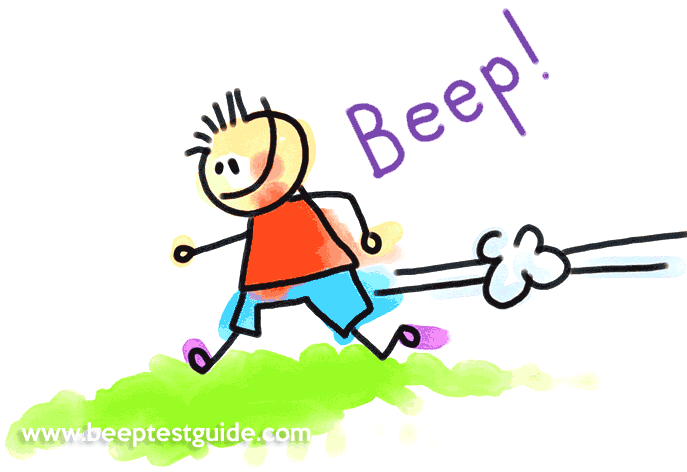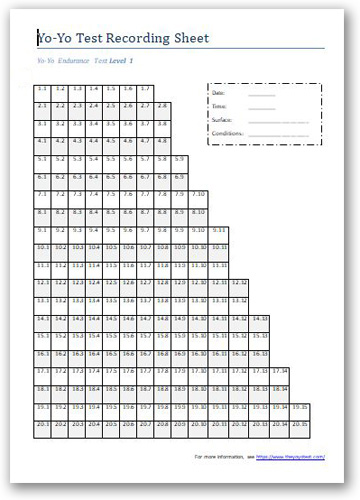

This will limit the chances of you dropping out due to boredom. Set yourself a goal when carrying out the test to motivate you to take it seriously.This minimises the risk of dropping out for anything other than your CRE levels declining. Complete the test on a flat and dry surface so you do not slip when turning.The beep test involves running continuously between two points that are 20 meters apart (also found in 15 meters). In doing this, we are identifying an important part in the process then showing why this part is important in making the method work. The beep test, often also called the multi-stage fitness test or shuttle run is a fitness test that’s fantastic for gauging and improving your cardio conditioning and testing your maximum oxygen uptake (known as your VO2 max).). Let's now deconstruct this method and break it down into smaller parts. Most beep tests only provide you with the level you are starting so you might not notice the number of beeps you completed during that level, affecting the accuracy of results.Įasy to identify level of CRE by comparing to NORMS. The beeps during the course of the test get progressively faster as the levels increase.
Beep test recording series#
A bleep test involves running back and forth along a 15 or 20 meter track in time to a series of beeps.

Produces quantitative data which increase the likelihood of accurate and reliable results (so long as highly motivated). Is the beep test 15m or 20m There are two main variants the 15m bleep test, and the 20m bleep test. BenefitsĪppropriate method as research proves it collects data on CRE (so long as protocols are followed).Ĭan be boring and lead to you dropping out when others drop out. The reliability of the results depends on how motivated you are to complete the tests to the best of your ability.īelow are benefits and limitations of the beep test. The participants stand behind one of the lines facing the second line, and begin running when instructed by the recording. For this reason the test is also often called the beep or bleep test. Standardised fitness tests produce quantitative data as there is no opinion involved. BEEP TEST INFORMATION HOW IT WORKS: This test involves continuous running between two lines 20m apart in time to recorded beeps. To dominate the Beep Test you will need to run over 18km/hr. At the early stages you need to run under a comfortable 9km/hr. In general the Beep Tests increases by 0.5km/hr with every level. So with every level the speed you need to travel between the shuttles is faster. It has 11 different beep sounds to choose from, some will surprise you. With every level the Beep Test beeps get closer together. Set the distance to carry out the test by modifying the 20m between cones. At this point, you are out and collect your score from your teacher. The application allows: - Configure the starting level of the test, being able to choose even levels below 0, maintaining at all times the values proportional to each speed created for the test. Level 1 for untrained/ less trained individuals and level 2 for elite athletes. This process continues until you miss two beeps in a row. The yo-yo test according to (Top end sports, 2016), is similar to beep test, except in the yoyo intermittent test the subject have a short active rest for recovery, five (5) to six (10) seconds.Turning and joggging back to cone one before the following beep.Your aim is to reach this cone before the next beep. Starting behind the start line at cone one and jogging to the other cone on the beep.Setting up two cones 20m apart on a flat and dry surface.Each test has a set of protocols that should be followed in line with evidence from research. Įach test is applicable to one aspect of fitness, for example, the beep test gathers data on your CRE levels. Standardised fitness tests are a range of recognised tests used to measure different fitness components. Use the beep test calculator to get a fitness rating.Methods for the physical factor (fitness)īelow are some methods used to collect data on physical factors.It requires athletes to perform continuous 20m shuttle runs, in which the individual must reach the opposite end of the 20m grid before a beep sounds off.

You must be at the line when the beep sounds. The beep test is designed to act as a continuous sub-maximal challenge designed to measure your aerobic power.


 0 kommentar(er)
0 kommentar(er)
